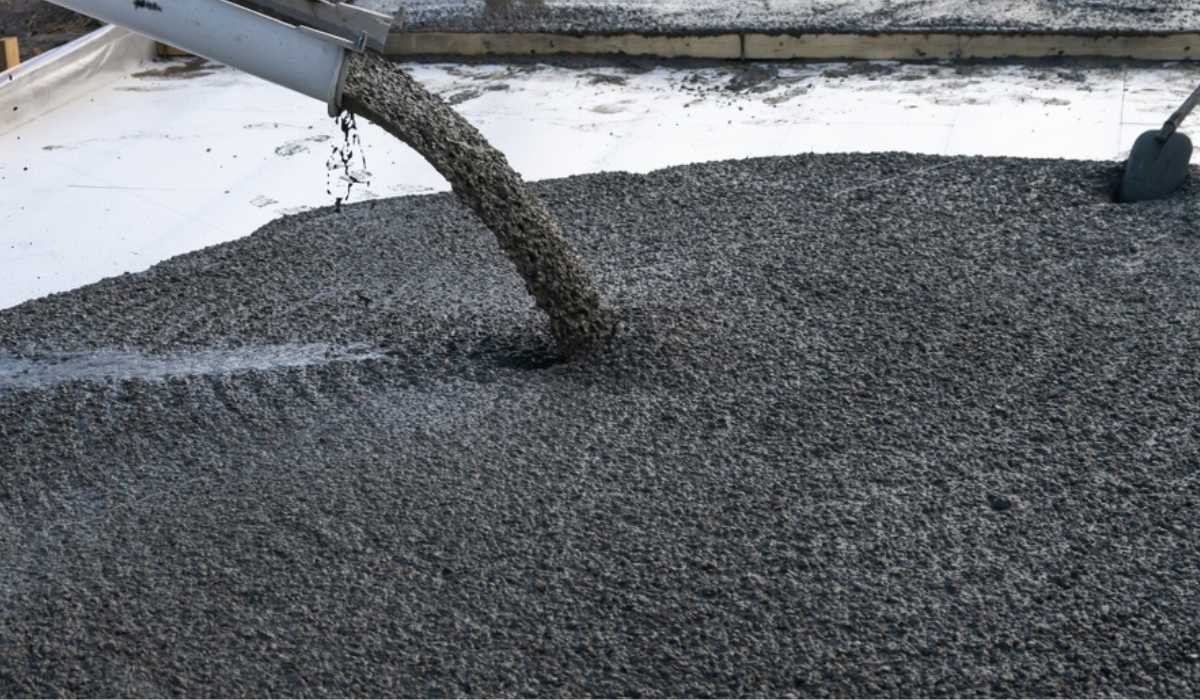Cement, water, aggregates (such as sand, gravel, or crushed stone) and, occasionally, chemical admixtures are the main ingredients of concrete. The water-cement ratio is a critical factor in determining the strength, workability, and durability of concrete. It refers to the proportion of water to cement in the mix, and it plays a crucial role in the hydration process that occurs when the concrete sets and hardens.
In most cases, the water-cement ratio is stated as a decimal value, with a lower number denoting a larger cement content and stronger concrete mix. For example, a water-cement ratio of 0.5 means that for every pound of cement in the mix, there are 0.5 pounds of water. A lower water-cement ratio results in a denser, stronger concrete that is less permeable and more resistant to freeze-thaw damage and chemical attack. On the other hand, a higher water-cement ratio results in a more fluid, workable mix that is easier to place and compact, but also weaker and more sensitive to cracking and other forms of degradation.
Table of Contents
Water cement ratio: Importance
- The water-cement ratio is a critical factor in determining the strength, workability, and durability of concrete. It refers to the proportion of water to cement in the mix, and it plays a crucial role in the hydration process that occurs when the concrete sets and hardens.
- Concrete that has a lower water-to-cement ratio is denser, stronger, less porous, and more resistant to chemical and freeze-thaw degradation. A larger water-to-cement ratio, on the other hand, produces a mix that is more fluid and workable, simpler to put, and more compact, but it is also weaker and more prone to cracking and other types of degradation.
- The optimal water-cement ratio for a given project depends on several factors, including the type and size of aggregate, the ambient temperature and humidity, and the intended use of the concrete. A water-cement ratio that is too high or too low can result in concrete that is too weak or too brittle, respectively.
- It is important to control the water-cement ratio to produce concrete with the desired strength and durability. An appropriate water-cement ratio will ensure that the chemical reaction between the water and cement is sufficient to properly hydrate the cement and form the necessary chemical bonds that give concrete its strength.
- A proper water-cement ratio also helps to minimise the amount of water that is absorbed into the concrete, which can cause it to crack and deteriorate over time. By selecting the right water-cement ratio for a given project, engineers and contractors can produce concrete that will perform well and last for many years.
How to calculate the ratio for concrete?
The water-cement ratio is calculated by dividing the total weight of water used in the concrete mix by the total weight of cement. The resulting decimal number is then expressed as a percentage or fraction.
Here’s an overview of how to determine the water-cement ratio:
- Determine the total weight of cement used in the mix. For example, if you’re using 100 pounds of cement, the total weight of cement is 100 pounds.
- Determine the total weight of water used in the mix. For example, if you’re using 50 pounds of water, the total weight of water is 50 pounds.
- Divide the total weight of water by the total weight of cement. In this example, 50 divided by 100 is 0.5.
- Express the result as a fraction or percentage. In this example, the water-cement ratio is 0.5, or 50%.
It’s important to note that the water-cement ratio is not the only factor that affects the quality of concrete. The proper curing and protection of concrete are also essential for ensuring its long-term strength and durability. This includes covering the concrete with a curing membrane or damp burlap after it has been placed and protecting it from extreme temperature fluctuations, freeze-thaw cycles, and exposure to deicing salts or chemicals.
FAQs
What is the water-cement ratio?
The water-cement ratio is the proportion of water to cement in the concrete mix.
Why is the water-cement ratio important?
The water-cement ratio is important because it affects the strength, workability, and durability of the concrete.
How is the water-cement ratio calculated?
The water-cement ratio is calculated by dividing the total weight of water used in the mix by the total weight of cement.
What is an ideal water-cement ratio?
The ideal water-cement ratio can vary depending on the type of aggregate, ambient temperature and humidity, and intended use of the concrete, but typically ranges from 0.4 to 0.6.
Can a high water-cement ratio weaken the concrete?
Yes, a high water-cement ratio can weaken the concrete and make it more susceptible to cracking and degradation.
